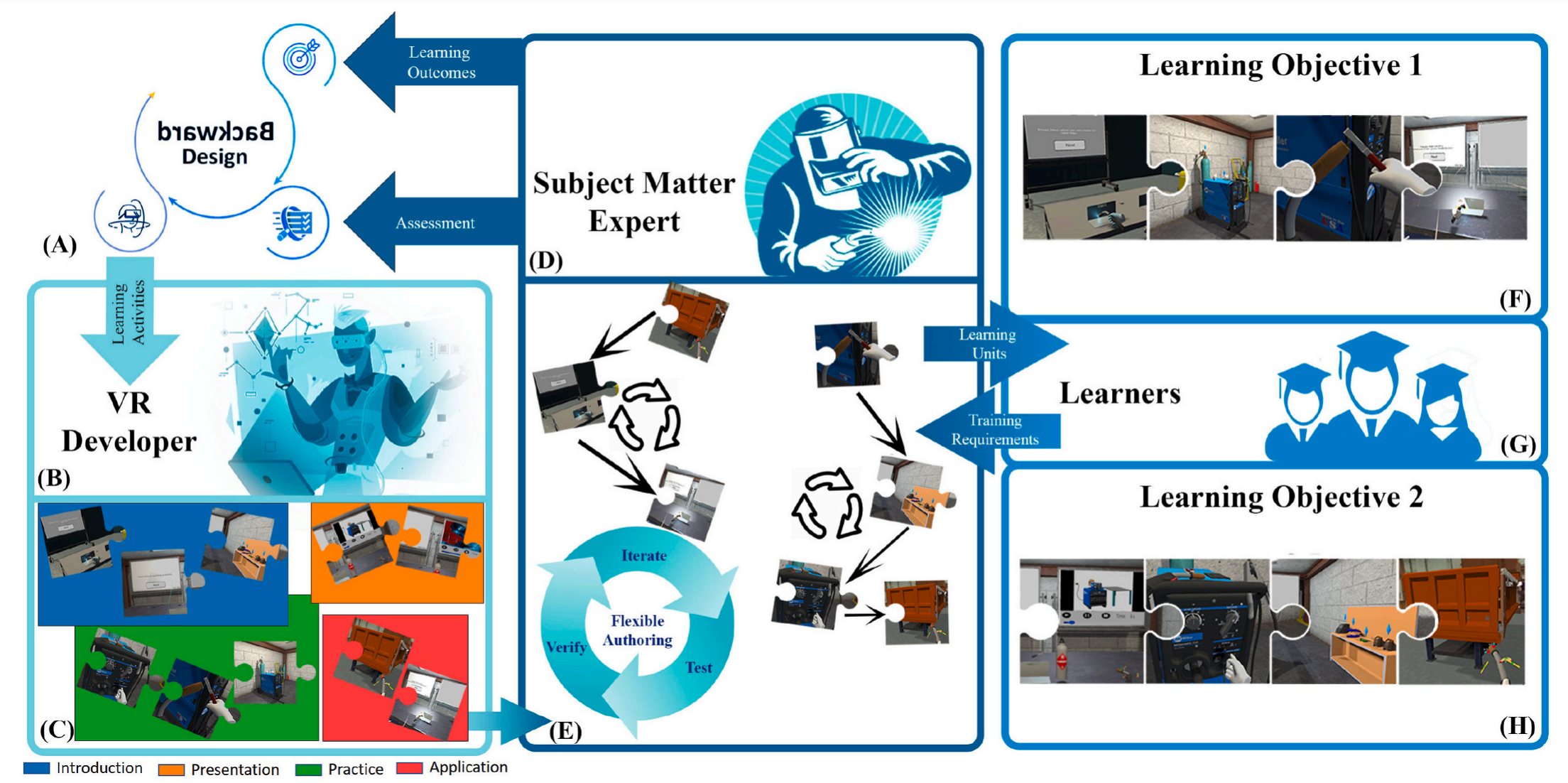Despite the recognized efficacy of immersive Virtual Reality (iVR) in skill learning, the design of iVR-based learning units by subject matter experts (SMEs) based on target requirements is severely restricted. This is partly due to a lack of flexible ways of authoring instruction flows to arrange the learning activities in alignment with the desired learning objectives. Our research provides a workflow design enabling SMEs to author the flow of learning activities developed by the Virtual Reality (VR) developers, with an aim to enable learners achieve desired goals progressively in a virtual environment. Additionally, this outcome-oriented flow authoring utilizes a scalable learning framework that categorizes learning activities into four instructional phases: Introduction, Presentation, Practice, and Application. Such frameworks can be easily integrated into the instruction to plan a class or a series of classes to cover an entire concept or chapter. Using a welding use case, our user study evaluation with 12 experienced welders indicated positive ratings about the usefulness of such workflows for flexible planning of training scenarios. We envision adoption of such methods could facilitate greater and more efficient adoption of the iVR technologies in pedagogical settings.
Authoring instructional flow in iVR learning units to promote outcome-oriented learning
Authors: Ananya Ipsita, Mayank Patel, Asim Unmesh, Karthik Ramani
Computers & Education: X Reality 5 (2024): 100074.
https://doi.org/10.1016/j.cexr.2024.100074


Ananya Ipsita
Ananya Ipsita is a Master's student in the School of Mechanical Engineering at Purdue University since Fall 2018. She received her Bachelor's degree in Electronics and Communication Engineering from National Institute of Technology, Rourkela, India. Prior to joining Purdue, she worked as a software engineer in SAP Labs, India where she designed and developed analytical business solutions. Her research interest includes computer vision, robotic systems, Augmented Reality (AR) and Human-Computer Interaction (HCI).
